 Boxing films are never about the sport of boxing. Boxing is so primitive, so stark and simple-minded, that it can only function as a metaphor for the larger concerns of character and conflict. Which is simply fine with me as someone who really has no interest in sports; so many great movies are "about" boxing: Rocky (1976), Raging Bull (1980), Body and Soul (1947), The Harder They Fall (1955), Million Dollar Baby (2004). One film that doesn't get mentioned in the same breath as those is John Huston's 1972 adaptation of a novel by Leonard Gardner, Fat City (1972). Set in the same sort of broken-down loser milieu as a Charles Bukowski story or a Tom Waits song, Fat City has atmosphere and grit to spare.
Boxing films are never about the sport of boxing. Boxing is so primitive, so stark and simple-minded, that it can only function as a metaphor for the larger concerns of character and conflict. Which is simply fine with me as someone who really has no interest in sports; so many great movies are "about" boxing: Rocky (1976), Raging Bull (1980), Body and Soul (1947), The Harder They Fall (1955), Million Dollar Baby (2004). One film that doesn't get mentioned in the same breath as those is John Huston's 1972 adaptation of a novel by Leonard Gardner, Fat City (1972). Set in the same sort of broken-down loser milieu as a Charles Bukowski story or a Tom Waits song, Fat City has atmosphere and grit to spare.Winsome and innocent young Jeff Bridges, fresh from The Last Picture Show (1971), plays Ernie, who turns up in a gym to absentmindedly work out and meets Stacey Keach as Tully, utterly believable as a worn-out, punch-drunk and actual-drunk ex-fighter working his way to the bottom. Encouraged by Tully to train for real, Ernie goes to see Tully's old coach Ruben (Nicholas Colasanto, who you might remember as Coach from "Cheers"), and starts a career as a fighter. Meanwhile Tully drinks in a local bar and befriends Oma (Oscar-nominated Susan Tyrell), a legendary drunk who tends to fly off the handle about the "white race in decline" while she dates a black man (Curtis Cokes, a real-life boxing champion), but she soon hitches herself to Tully and they try to achieve some semblance of cohabitation.

 But it ends badly and he takes to drinking again in earnest. Ernie doesn't do so hot as a boxer, seems more concerned with the cut of his robe than fighting, and soon has to join up with Tully out in the onion fields with migrant workers, discussing marriage. "Ernie, don't let anybody knock marriage," Tully tells him. "No, man, it's got its compensations," Ernie replies. But then Tully, perhaps inspired by Ernie, tries to make a comeback: "I got to get myself together and get down to the gym, start working out..." But this ain't Rocky and the training montage doesn't come together. "I'm gonna be bad news this time around!" He doesn't know the half of it.
But it ends badly and he takes to drinking again in earnest. Ernie doesn't do so hot as a boxer, seems more concerned with the cut of his robe than fighting, and soon has to join up with Tully out in the onion fields with migrant workers, discussing marriage. "Ernie, don't let anybody knock marriage," Tully tells him. "No, man, it's got its compensations," Ernie replies. But then Tully, perhaps inspired by Ernie, tries to make a comeback: "I got to get myself together and get down to the gym, start working out..." But this ain't Rocky and the training montage doesn't come together. "I'm gonna be bad news this time around!" He doesn't know the half of it.

 Huston gets all the details right. Filmed in Northern California, the skid-row setting is as rough-hewn, real and powerfully presented as the opening Mexican scenes of his Treasure of the Sierra Madre (1948). You can practically smell the stale liquor and sweat of the characters as they stumble about. In fact, in the opening credits, Keach is sprawled out in boxers and undershirt on his single bed in a dingy room and you'll think you can just reach out and touch the funk. What an intro to a character, especially with the plaintive rasp of Kris Kristofferson singing "Help Me Make It Through the Night" on the soundtrack.
Huston gets all the details right. Filmed in Northern California, the skid-row setting is as rough-hewn, real and powerfully presented as the opening Mexican scenes of his Treasure of the Sierra Madre (1948). You can practically smell the stale liquor and sweat of the characters as they stumble about. In fact, in the opening credits, Keach is sprawled out in boxers and undershirt on his single bed in a dingy room and you'll think you can just reach out and touch the funk. What an intro to a character, especially with the plaintive rasp of Kris Kristofferson singing "Help Me Make It Through the Night" on the soundtrack.
 Fat City is one of those forgotten films that deserves a wider audience, filled with scenes that typify the characters studies of the time. Ruben in bed smoking while his wife sleeps, musing aloud about the promise Ernie shows. Ernie and his young wife (Candy Clark) pressuring him to marry while they waste time out parking. A dinner scene with Keach and Tyrell arguing as he opens a can of peas and dumps them on a plate alone is priceless. As Oma, Tyrell is truly one of the great screen drunks, slurring, screeching, stumbling, taking offense at the slightest comment one moment, petulant and self-pitying as a child the next. She's almost unwatchable, which might be the point.
Fat City is one of those forgotten films that deserves a wider audience, filled with scenes that typify the characters studies of the time. Ruben in bed smoking while his wife sleeps, musing aloud about the promise Ernie shows. Ernie and his young wife (Candy Clark) pressuring him to marry while they waste time out parking. A dinner scene with Keach and Tyrell arguing as he opens a can of peas and dumps them on a plate alone is priceless. As Oma, Tyrell is truly one of the great screen drunks, slurring, screeching, stumbling, taking offense at the slightest comment one moment, petulant and self-pitying as a child the next. She's almost unwatchable, which might be the point.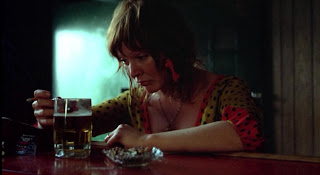
 And when it all wraps up, after all the ups and downs and drunken confrontations have been experienced, there is a truly honest and touching, even awkward, moment. Tully and Ernie randomly meet up one night - Tully's drunk, Ernie's given it up for his family - and get a cup of coffee in a truly desolate coffee shop, served by an ancient Asian man. Tully muses, "The waste... Before you can get rollin', your life makes a beeline for the drain." Kristofferson's song sneaks up on us on us again and we're left to wonder if indeed guys like this can make it at all.
And when it all wraps up, after all the ups and downs and drunken confrontations have been experienced, there is a truly honest and touching, even awkward, moment. Tully and Ernie randomly meet up one night - Tully's drunk, Ernie's given it up for his family - and get a cup of coffee in a truly desolate coffee shop, served by an ancient Asian man. Tully muses, "The waste... Before you can get rollin', your life makes a beeline for the drain." Kristofferson's song sneaks up on us on us again and we're left to wonder if indeed guys like this can make it at all.








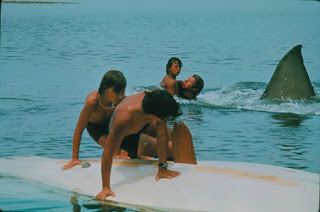







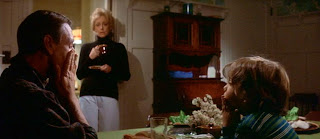
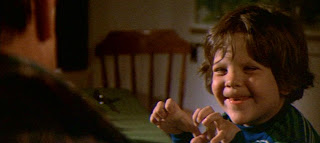
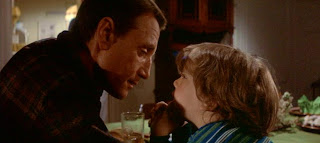








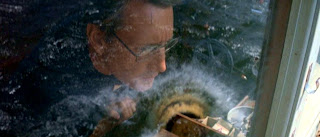





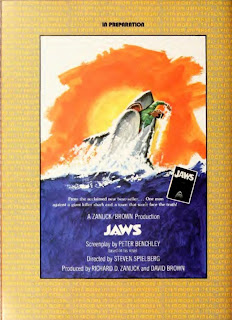















.jpg)



